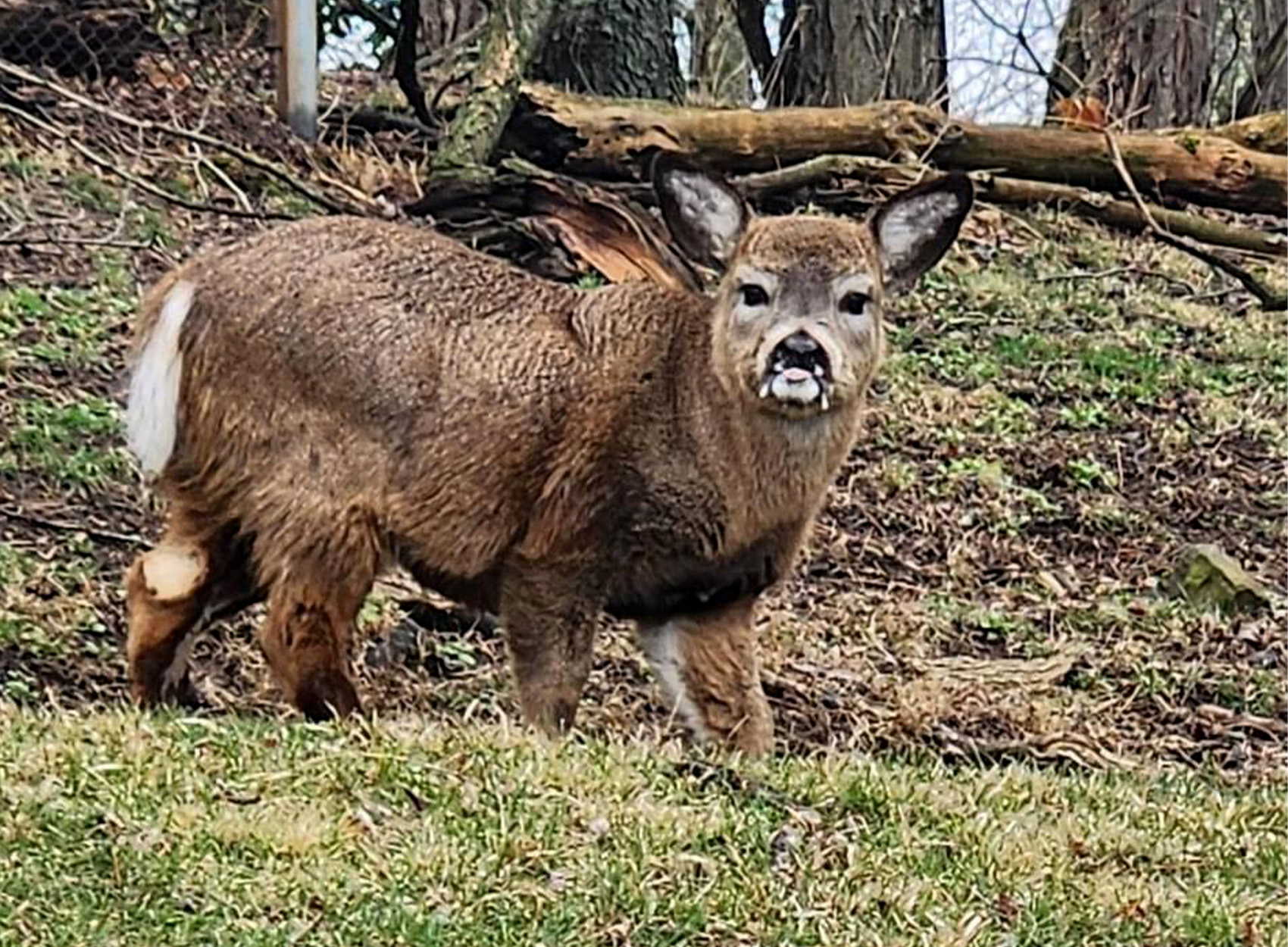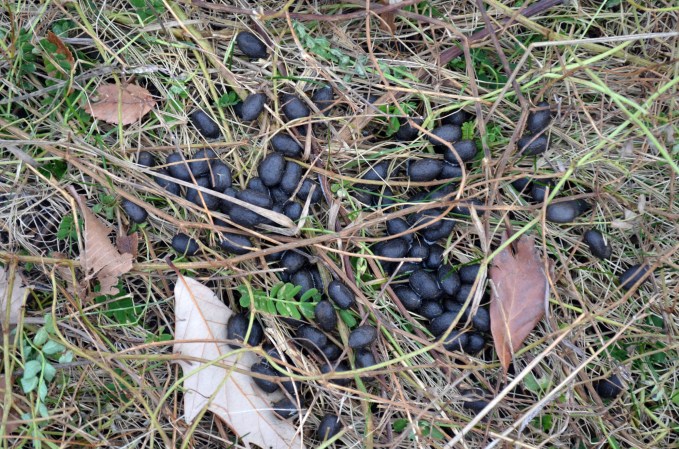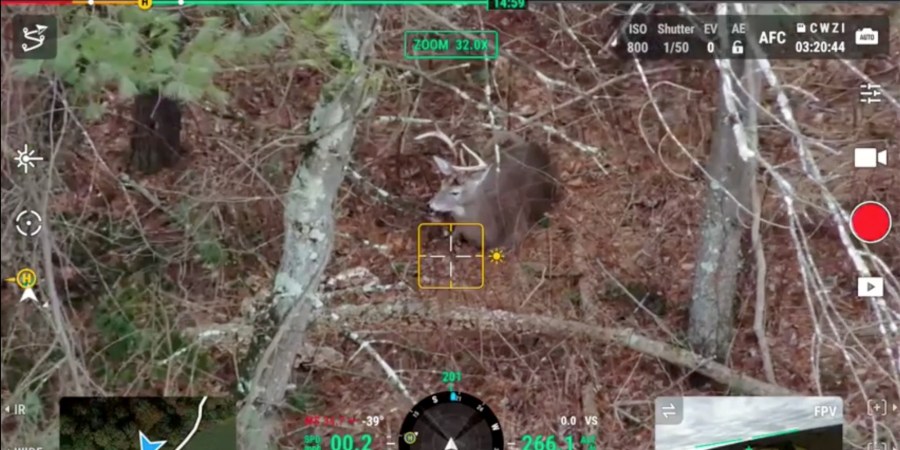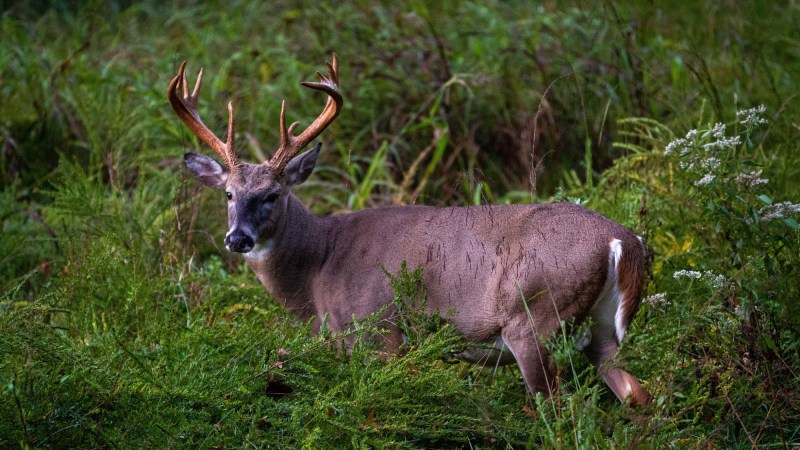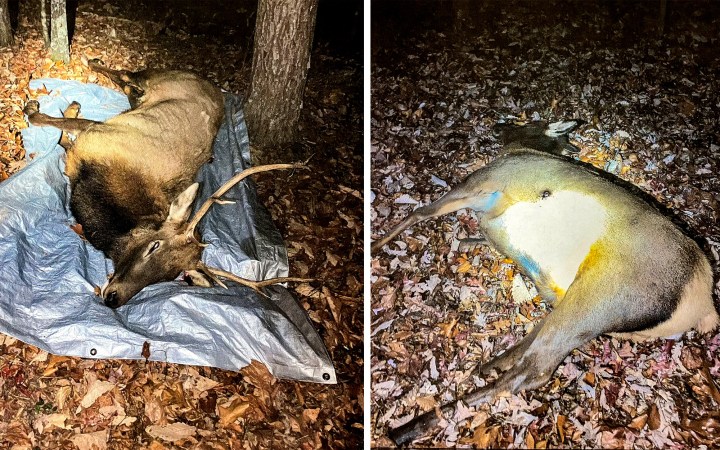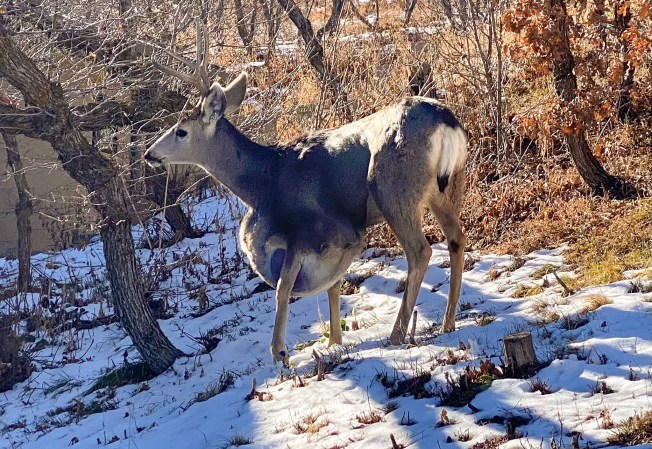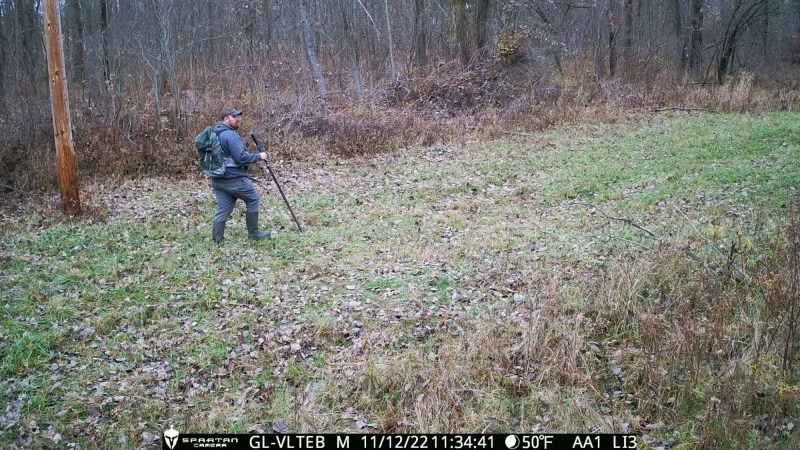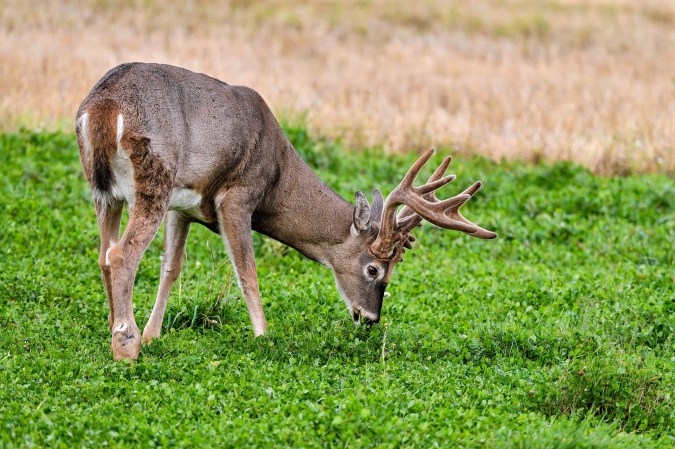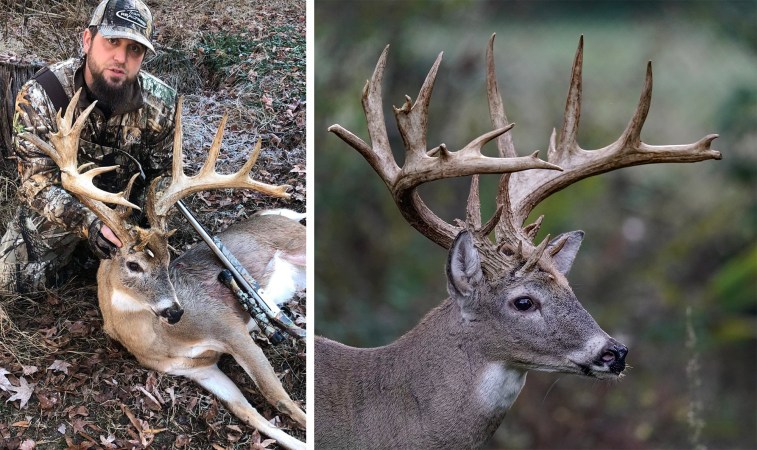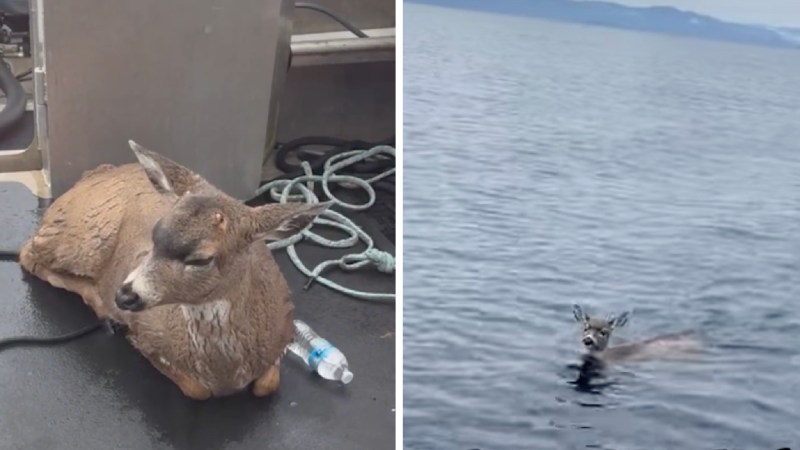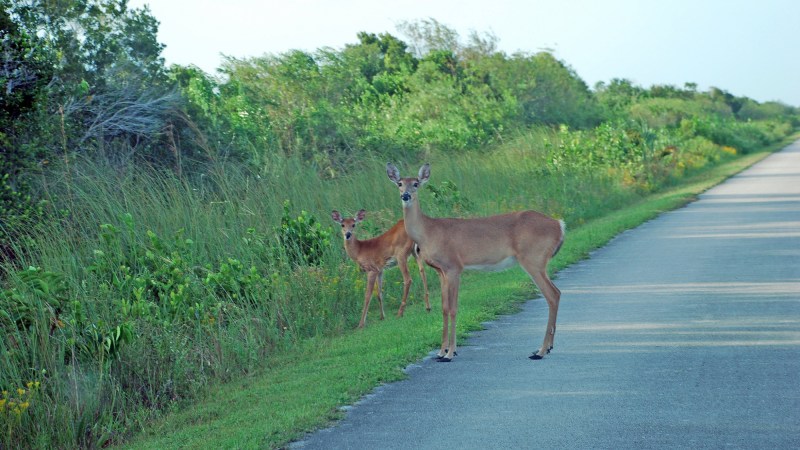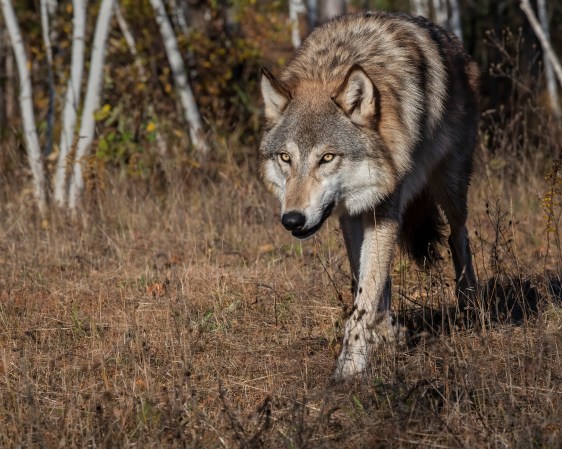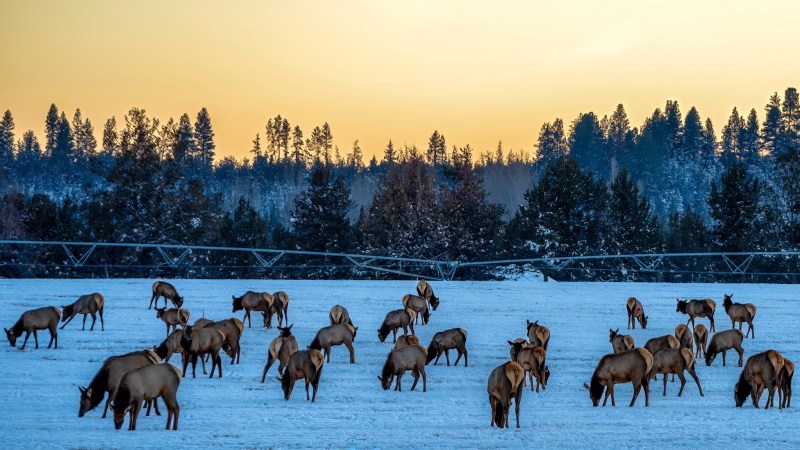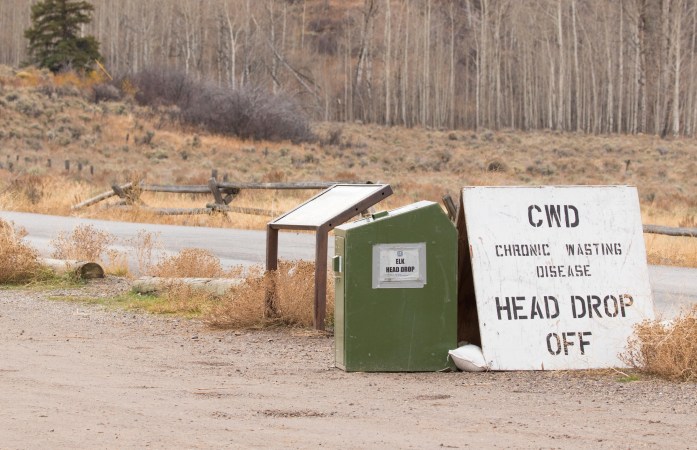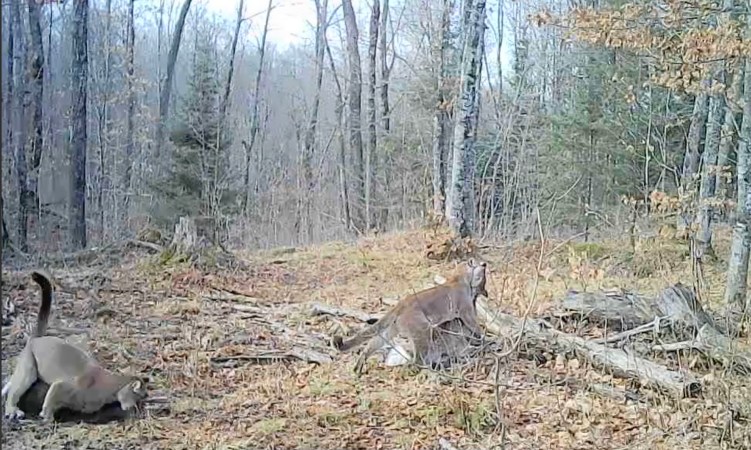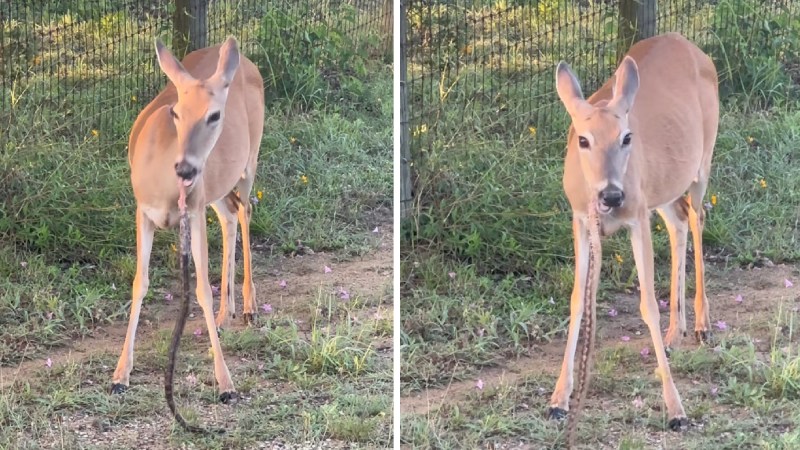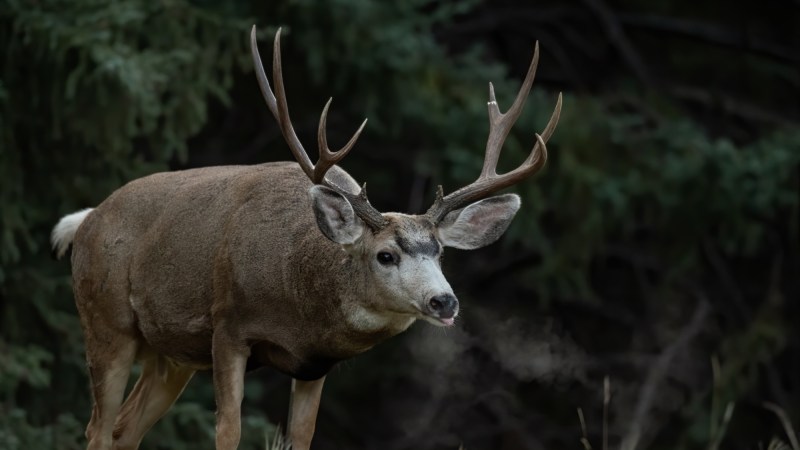A Pennsylvania man has captured several photos of a bizarre-looking miniature deer that’s been frequenting his backyard in the Pittsburgh suburbs. The tiny whitetail doe caught his attention when it first showed up on the property along with several other normal-sized deer around March 1.
“It looks like a calf to me,” John Dillard Jr. tells Outdoor Life. He says it’s a thick-bodied deer without any spots, which leads him to believe it’s fully mature. Except the doe’s stumpy legs are roughly a third the size of a typical whitetail deer. Judging from the photographs, the deer’s mouth looks unusual as well. One photo, which shows symmetrical white marks around the deer’s nose and mouth, gives the impression of protruding teeth that resemble the tusks of a Chinese water deer.
Dillard has lived at the property in Bethel Park, which lies just south of Pittsburgh, for around five years now. He says there’s always been an abundance of deer in the area. (In fact, these urban herds have caused so many problems that last fall, the city launched a culling program with help from the U.S. Department of Agriculture and local bowhunters.) When he first moved in, Dillard’s neighbors notified him that a herd of a dozen or so had been bedding in his backyard. Dillard owns a small dog, and its presence put an end to that but it hasn’t kept the deer from jumping his fence during the daytime to browse in his yard and drink out of his swimming pool. He’s had so many visitors that the deer finally knocked his fence down last fall.
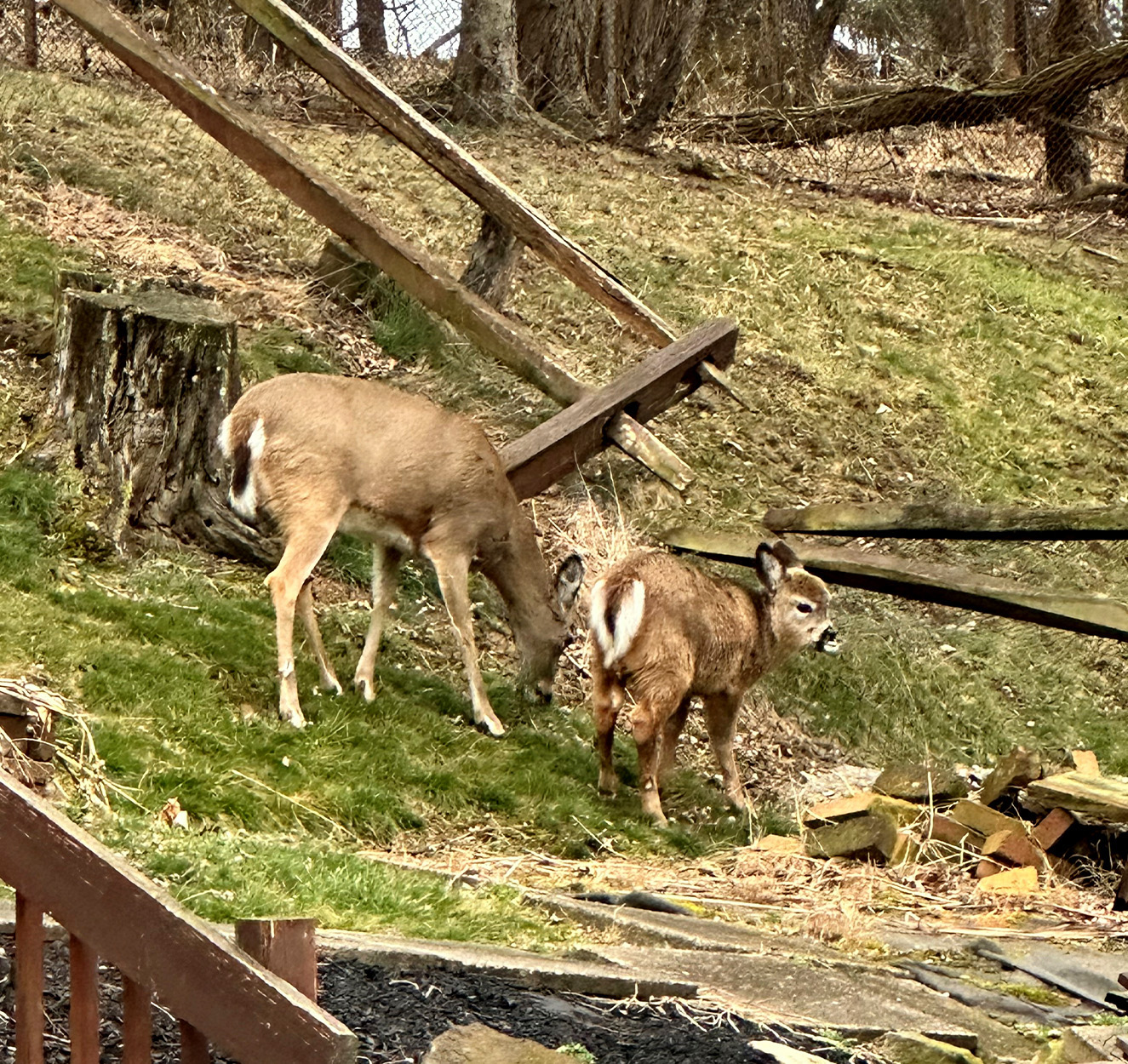
Photo courtesy of John Dillard Jr.
“The deer are always jumping over the fence, and I guess some aren’t that good of jumpers,” says Dillard, who grew up deer hunting on public forest land in Allegheny County. “And the only reason I believe [this deer] got in there is because she was able to walk over that fence. She surely wasn’t jumping it like the others do.”
Out of curiosity, Dillard reached out to the Pennsylvania Game Commission over the weekend to ask if they had any insight into the mini deer. A wildlife biologist emailed him back on Monday.
“It’s likely a genetic condition but not much more can be said unless the deer is examined,” the biologist wrote in an email. “The deer has survived just fine up to now and I imagine it’s going to continue to do so.”
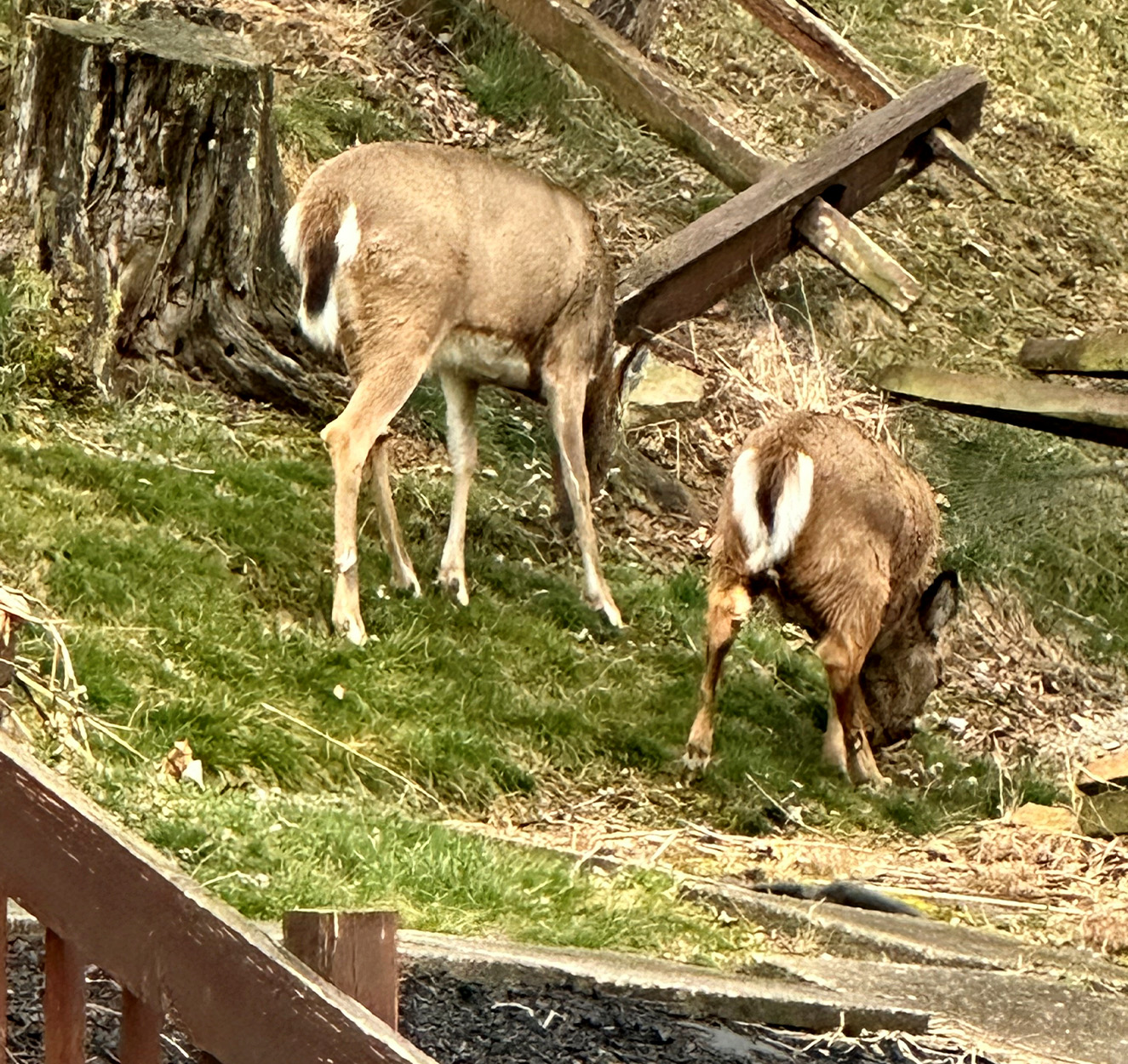
Photo courtesy of John Dillard Jr.
Miniature whitetails do exist, so the deer that Dillard photographed isn’t totally out of the norm. Hunters come across these deer on occasion in places that are well outside the range of Keys deer and Coues deer — two whitetail subspecies that run on the smaller side and are native to Florida and the desert southwest, respectively.
Read Next: 9 Deer Diseases Every Hunter Should Know
In December, a Mississippi hunter tagged a “dwarf buck” that was around the size of a mature Labrador retriever. The chief of staff of the Mississippi Department of Wildlife Fish and Parks told reporters that he suspected the buck’s small size was likely caused by an abnormal chromosome. This chromosome issue could help explain the miniature deer that frequents Dillard’s yard, but the native Pennsylvanian has his own theory.
“To me, the deer looks like it crossbred with another species, like a donkey or a cow. The head looks just like a calf,” Dillard says. “I work in oil and gas negotiating contracts with landowners, so I spend a lot of time hanging out on farms and I’ve seen a lot of calves. It has that rounded wide brow, short snout. Looks a lot like a cow to me.”
The National Deer Association’s director of conservation Matt Ross says this kind of crossbreeding would be nearly impossible, however, considering the physical differences between a whitetail deer and a domestic cow.
“My money would be on that being a genetic issue from two adult deer as the parents,” Ross says.
Editor’s Note: This article was updated on March 6 to include comment from the NDA.

